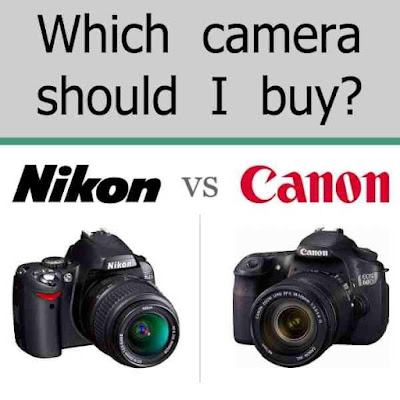
Table of Contents
Canon vs Nikon debate has always been a sensitive discussion, with new product releases rendering old products out-of-date. Two giants of the industry, Canon and Nikon, have long captivated both beginners and professional photographers alike.
For a very long time this has been a difficult debate to pick which is better between the Canon & Nikon camera. Today we will set the record straight stating out the advantages and disadvantages of both cameras and also similarities.
Canon vs Nikon: The three Key Difference
At the heart of every camera lies an intricate interplay of optics, mechanics, and electronics. Canon and Nikon have mastered this art, each employing their unique approaches to create imaging marvels. Canon’s commitment to precision and innovation is underscored by its utilization of Dual Pixel CMOS AF technology, delivering exceptional autofocus performance. On the other hand, Nikon’s integration of EXPEED processors across its lineup ensures impeccable image processing, giving rise to images that are both vibrant and detailed.

The Megapixel Dilemma
Though both offer superb image quality, the Canon has more megapixels but the Nikon shoots more frame per second.
The megapixel count has long been a point of contention among photographers. Canon and Nikon have taken distinct approaches in addressing this issue. Canon’s EOS models often boast higher megapixel counts, rendering them ideal for applications that require extreme detail, such as landscape and studio photography. Nikon, conversely, places emphasis on larger pixels rather than sheer quantity, resulting in impressive low-light performance and dynamic range.
Lenses and Lens Mounts:

One of the reasons Canon and Nikon are giants in the industry are because of their lenses. The main differences between Canon EF and Nikon F Lenses is the autofocus. With Canon, all EOS lenses have autofocus, But only Nikon AF-S lenses have autofocus.
Canon’s EF and RF lenses offer unparalleled versatility, while Nikon’s F-mount lenses maintain compatibility with a wide range of historical equipment. The choice between these two ecosystems involves consideration of existing gear and the trajectory of one’s photographic journey.
Sensors: What’s the difference?

Sensor Size Impact: Canon’s full-frame sensors offer a broader field of view, suitable for landscape and portrait photography, while Nikon’s APS-C sensors excel in a more compact form, delivering outstanding results through sensor optimization.
Dynamic Range Distinction: Canon sensors are known for impressive dynamic range, contributing to detailed highlights and tonal gradations, while Nikon sensors exhibit nuanced rendering of shadows and subtleties, showcasing their dynamic range advantage.
Low-Light Excellence: Canon’s high-resolution sensors perform well in well-lit conditions, capturing intricate details, whereas Nikon’s emphasis on larger pixels equips their sensors with exceptional low-light performance, mitigating noise even in dim lighting.

In addition here is a more detailed table content to help state more difference between the Canon and Nikon camera brands.
Comparison of Aspect, Canon Cameras, and Nikon Cameras
| Aspect | Canon Cameras | Nikon Cameras |
|---|---|---|
| Megapixel Count | Higher megapixel counts ideal for extreme detail | Emphasis on larger pixels for exceptional low-light performance |
| Autofocus System | Dual Pixel CMOS AF with on-sensor phase detection | Multi-CAM system excelling in subject tracking |
| Ergonomics | Intuitive controls and user-friendly interfaces | Meticulous grip and button placement for tactile experience |
| Lens Ecosystem | Extensive EF and RF lens lineup for versatility | F-mount lenses with wide compatibility and historical value |
| Image Stabilization | In-body and lens-based stabilization options | Vibration Reduction technology for effective image stabilization |
| Video Capabilities | Strong video features with reliable autofocus | Enhanced video functionality with manual controls |
| Image Rendering | Canon’s distinct color science producing vibrant imagery | Nikon’s image rendering offering rich and nuanced results |
| Specialization | Well-regarded for studio, landscape, and portrait photography | Notable performance in sports, wildlife, and action photography |
| Innovation | Pioneering Dual Pixel CMOS AF and innovative features | EXPEED processors driving high-quality image processing |
The choice between Canon and Nikon cameras ultimately comes down to personal preferences and specific needs. Both brands offer a wide range of high-quality options that cater to different photography styles and skill levels. Whether it’s the ergonomic design, lens compatibility, or feature set, each brand has its strengths. As photographers, the key is to assess your requirements, compare models, and choose the system that aligns best with your creative vision and goals.

